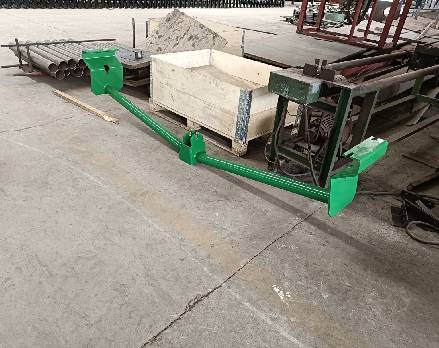 Afrikaans
Afrikaans  Albanian
Albanian  Amharic
Amharic  Arabic
Arabic  Armenian
Armenian  Azerbaijani
Azerbaijani  Basque
Basque  Belarusian
Belarusian  Bengali
Bengali  Bosnian
Bosnian  Bulgarian
Bulgarian  Catalan
Catalan  Cebuano
Cebuano  Corsican
Corsican  Croatian
Croatian  Czech
Czech  Danish
Danish  Dutch
Dutch  English
English  Esperanto
Esperanto  Estonian
Estonian  Finnish
Finnish  French
French  Frisian
Frisian  Galician
Galician  Georgian
Georgian  German
German  Greek
Greek  Gujarati
Gujarati  Haitian Creole
Haitian Creole  hausa
hausa  hawaiian
hawaiian  Hebrew
Hebrew  Hindi
Hindi  Miao
Miao  Hungarian
Hungarian  Icelandic
Icelandic  igbo
igbo  Indonesian
Indonesian  irish
irish  Italian
Italian  Japanese
Japanese  Javanese
Javanese  Kannada
Kannada  kazakh
kazakh  Khmer
Khmer  Rwandese
Rwandese  Korean
Korean  Kurdish
Kurdish  Kyrgyz
Kyrgyz  Lao
Lao  Latin
Latin  Latvian
Latvian  Lithuanian
Lithuanian  Luxembourgish
Luxembourgish  Macedonian
Macedonian  Malgashi
Malgashi  Malay
Malay  Malayalam
Malayalam  Maltese
Maltese  Maori
Maori  Marathi
Marathi  Mongolian
Mongolian  Myanmar
Myanmar  Nepali
Nepali  Norwegian
Norwegian  Norwegian
Norwegian  Occitan
Occitan  Pashto
Pashto  Persian
Persian  Polish
Polish  Portuguese
Portuguese  Punjabi
Punjabi  Romanian
Romanian  Russian
Russian  Samoan
Samoan  Scottish Gaelic
Scottish Gaelic  Serbian
Serbian  Sesotho
Sesotho  Shona
Shona  Sindhi
Sindhi  Sinhala
Sinhala  Slovak
Slovak  Slovenian
Slovenian  Somali
Somali  Spanish
Spanish  Sundanese
Sundanese  Swahili
Swahili  Swedish
Swedish  Tagalog
Tagalog  Tajik
Tajik  Tamil
Tamil  Tatar
Tatar  Telugu
Telugu  Thai
Thai  Turkish
Turkish  Turkmen
Turkmen  Ukrainian
Ukrainian  Urdu
Urdu  Uighur
Uighur  Uzbek
Uzbek  Vietnamese
Vietnamese  Welsh
Welsh  Bantu
Bantu  Yiddish
Yiddish  Yoruba
Yoruba  Zulu
Zulu Understanding Conveyor Idlers and Their Role in Material Handling Systems
Understanding Conveyor Idlers Essential Components in Material Handling
Conveyor idlers are critical components of conveyor systems, which play a pivotal role in the efficient transportation of materials across various industries. From mining and manufacturing to packaging and distribution, idlers enable continuous movement while supporting the conveyor belt. This article delves into the significance, types, and design considerations of conveyor idlers, highlighting their importance in material handling systems.
What Are Conveyor Idlers?
Idlers are cylindrical rollers that are mounted on a frame and support the conveyor belt. They are designed to keep the belt aligned, reduce friction, and provide a stable platform for the materials being transported. Typically made from durable materials such as steel or plastic, idlers come in various shapes and sizes to accommodate different conveyor systems. They are strategically placed at intervals along the length of the conveyor to ensure proper belt tension and support.
The Role of Conveyor Idlers
The primary function of idlers is to support the weight of the conveyor belt and the material it carries. By distributing this weight evenly, idlers help prevent excessive wear and tear on the belt. Additionally, they assist in maintaining the belt’s alignment, which is crucial to avoid spills and misaligned loads that could lead to costly downtime.
Idlers also play a role in reducing friction between the conveyor belt and the frame. This reduction in friction enhances the efficiency of the system, allowing for smoother operation and energy savings. Moreover, by using appropriate materials and coatings, idlers can withstand harsh environments and abrasive materials, further extending their lifespan.
Types of Conveyor Idlers
There are several types of conveyor idlers, each designed for specific applications. The most common types include
conveyor idlers

2. Return Idlers These are located on the return side of the conveyor and support the empty belt as it travels back to the loading section. They help maintain belt tension and prevent sagging.
3. Training Idlers Training idlers are used to ensure that the conveyor belt remains centered on the frame. They can be stationary or adjustable, allowing for belt tracking adjustments.
4. Self-Aligning Idlers These idlers automatically adjust to changes in the belt's path. They are especially useful in environments where the conveyor belt may experience misalignments due to heavy loads or debris.
Design Considerations
Designing effective conveyor idlers involves various considerations
- Load Capacity The idlers must be able to handle the maximum expected load without failing. Selecting the appropriate size and material is crucial in this regard.
- Angle of Inclination In incline conveyor applications, idlers must be designed to prevent material from sliding back down the belt. This may require specific roller designs or additional features.
- Environmental Conditions Idlers exposed to harsh weather, extreme temperatures, or corrosive materials must be constructed from resilient materials that can withstand these conditions without degrading.
Conclusion
In conclusion, conveyor idlers are indispensable components in material handling systems, playing a crucial role in supporting, guiding, and stabilizing conveyor belts. Their design and functionality can significantly impact the efficiency and longevity of conveyor systems across various industries. As industries continue to evolve, the importance of high-quality, well-designed conveyor idlers remains a cornerstone in the quest for optimized material transportation and handling solutions. Selecting the right type of idlers is essential for ensuring that the conveying process is efficient, cost-effective, and free of unnecessary disruptions.
-
Revolutionizing Conveyor Reliability with Advanced Rubber Lagging PulleysNewsJul.22,2025
-
Powering Precision and Durability with Expert Manufacturers of Conveyor ComponentsNewsJul.22,2025
-
Optimizing Conveyor Systems with Advanced Conveyor AccessoriesNewsJul.22,2025
-
Maximize Conveyor Efficiency with Quality Conveyor Idler PulleysNewsJul.22,2025
-
Future-Proof Your Conveyor System with High-Performance Polyurethane RollerNewsJul.22,2025
-
Driving Efficiency Forward with Quality Idlers and RollersNewsJul.22,2025





























